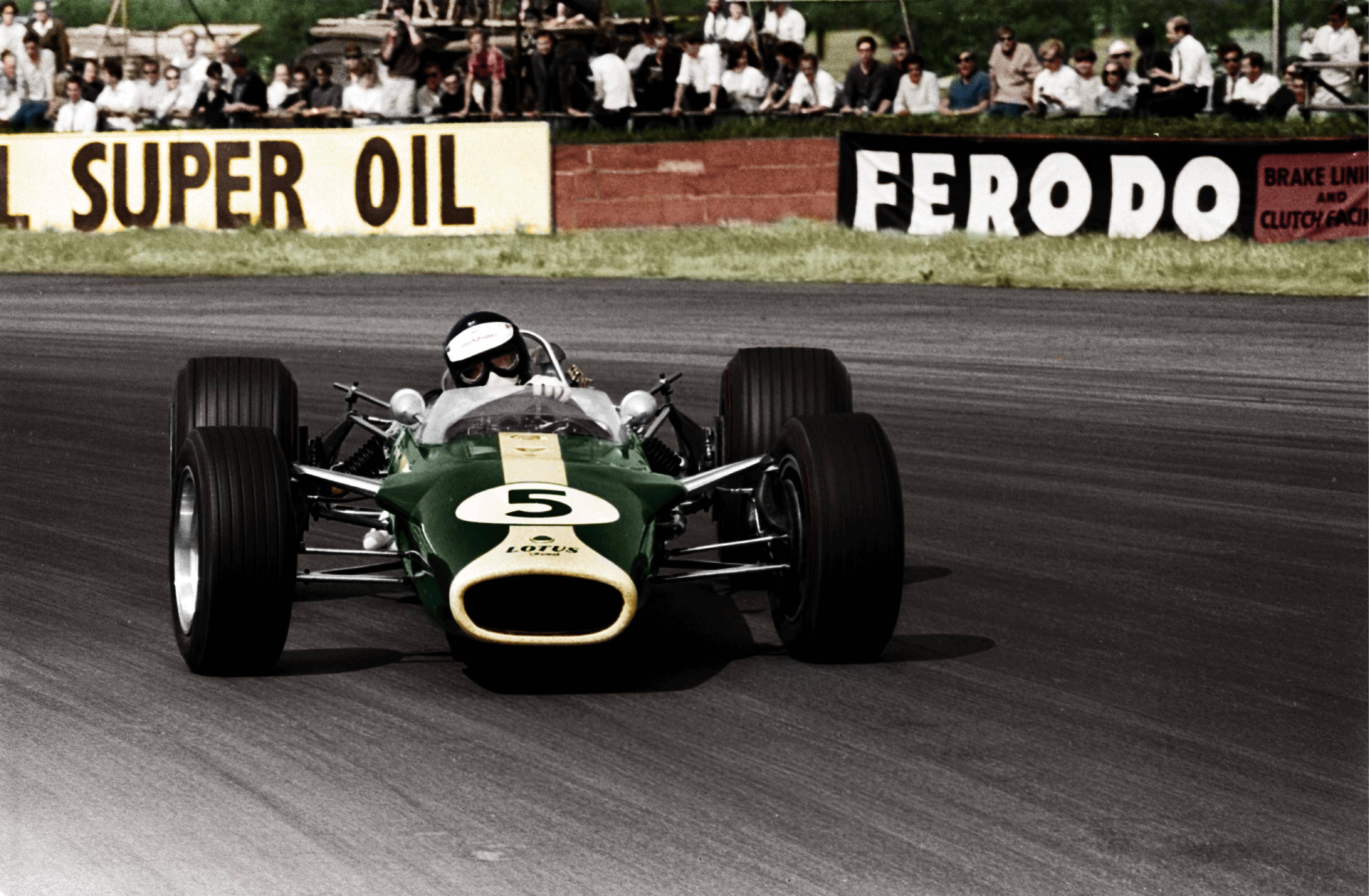There were seven of the remaining Lotus Type 49s in a booth at the Autosport International show in Birmingham, England in January 12-15. This is actually quite amazing, as the Lotus 49 was a ground-breaking race car.
In the hands of Jim Clark, the Lotus 49 won its very first race, the 1967 Dutch Grand Prix at Zandvoort, but only after Graham Hill had set pole position in another Type 49. Though the model would win just three more F1 races in 1967, Clark or Hill would capture every remaining pole position for the remainder of the 1967 season.

The Type 49 was designed around the Cosworth engine (Mike COStin and Keith DuckWORTH). Unhappy with BRM’s heavy H-16 engine Colin Chapman turned to old friends Mike Costin and Keith Duckworth, who’d met at Lotus before going on to form Cosworth. Financially unable to go it alone, Chapman convinced Ford of Britain to fund development efforts, a program that would eventually deliver both a four-cylinder Formula 2 engine (the Cosworth FVA) and an eight-cylinder Formula 1 engine (the Cosworth DFV). Once the bugs were sorted, the Cosworth DFV would remain competitive in Formula 1 until the mid-1980s.
The Type 49 also set construction standards for virtually all future F1 cars. Looking to save as much weight as possible, Chapman and Maurice Philippe designed a simple front monocoque to house the driver, the front suspension subframe, the fuel bladders and a reserve oil tank. This assembly bolted to the front of the Cosworth DFV engine at four points, and the engine and transmission served as stressed members of the frame. The rear suspension attached to the transmission, so both engine and gearbox were stressed members.
The earliest Type 49s weighed in at just over 1,100 pounds, and first-generation DFV’s produced roughly 415 horsepower at 9,000 RPM. Though the science of racing aerodynamics was still in its infancy, the Lotus 49 soon sported front and rear wings, and in 1968, the 49B experimented with a tall rear wing affixed to the rear suspension. On Graham Hill’s Type 49B, this wing’s angle of attack could be adjusted via a fourth pedal in the cockpit, but movable aerodynamic devices (and lofty rear wings) were soon banned by the FIA.
Counting Type 49, 49B and 49C variants, a total of 12 examples were built by Lotus, and the cars ran in Formula 1 into the 1971 season. In five years of competition, the Lotus 49 entered 42 Grands Prix, scored 12 wins, 23 podiums, 19 poles, 13 fastest laps, two constructors championships (1968, 1970) and two drivers championships (Graham Hill in 1968 and Jochen Rindt in 1970).
Yes, the Lotus 49 was a milestone in the development of today’s F1 car.




